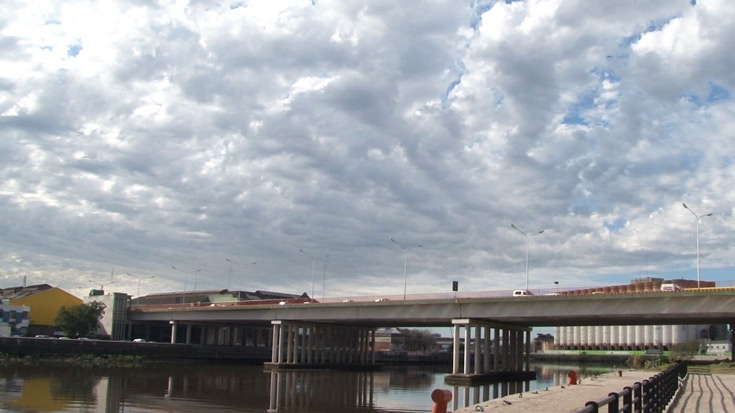The Matanza-Riachuelo River flows for approximately 64 kilometers, from the birthplace of dulce de leche, also known as the District of La Matanza, to the shores of La Boca.
Although La Boca is a well-known tourist destination, for more than 100 years, this river has earned the notorious distinction of being the discharge site for industrial waste and sewage, making it one of the most polluted rivers in the world.
This is changing, however. Argentina is implementing the most ambitious basin recovery project in its environmental history: the Integrated Plan for Environmental Sanitation for the cleanup and sustainable development of the Matanza-Riachuelo River basin.
This initiative is supported by the World Bank and implemented by the Matanza-Riachuelo River Basin Authority (ACUMAR), with the participation of the Secretariat for the Environment and Sustainable Development. Additionally, 13 river municipalities are involved, as is the City of Buenos Aires and the AySA Company (Argentina Water and Sanitation).
“We have just hit a milestone. The contracts have been signed to begin major works to improve sanitation coverage,” says Daniel Mira-Salama, World Bank Environmental Expert and Project Co-director.
These large-scale engineering works are crucial for the health of seven million people living in the area, of whom at least 10 percent live below the national poverty line.
Many of these families live in floodplains and near garbage dumps, which can threaten their health, in addition to creating an environmental problem. “Today the river is a potential source of problems for the population who live nearby,” says Mira-Salama.
Cleaner water for Riachuelo
The project seeks to limit both direct discharge of sewage and to oxygenate the river in an effort to revitalize it.
To this end, a large rubbish collector will be constructed on the left bank of the Riachuelo, which will transport sewage to different treatment plants, thereby avoiding its direct discharge into the river. The project also plans to buildan 11.5-kilometer outfall, which leads to Río de la Plata.
Additionally, the Integral Sanitation Plan will expand and/or build several treatment plants throughout the basin and construct waterfall aeration stations.
“Once the works are completed, the river can be used in previously unimaginable ways, such as for boating and other recreational activities,” says Mira-Salama.
Industries committed to the river
Much of the river pollution is the result of industrial discharge by more than 15,000 local enterprises. In addition to sewage, pollution originates from industrial waste such as tannery residues, which dump large quantities of chromium and sulfides into the river.
To address this situation, the basin recovery plan also includes an industrial conversion component to ensure cleaner production. Several enterprises have begun to improve how they manage their environmental impact.
According to ACUMAR, the basin currently has 459 converted enterprises and more than 1,300 enterprises in the process of conversion. Efforts must now focus on the remaining polluting businesses, which need to improve their production practices.
“Monitoring of small and medium-sized enterprises is a complex issue both in the Matanza-Riachuelo River Basin and in the rest of the world. Solid, proven solutions must be identified,” Mira-Salama emphasizes.
Faced with this challenge, experts from Spain, Brazil and Mexico met at the ACUMAR headquarters in Buenos Aires to share experiences on industrial management and treatment of effluent basins.
For example, in Leon, Mexico, where tanneries – one of the most polluting industries– produce some 50,000 pieces of leather daily, a treatment plant was built which has the capacity to clean 2,500 liters of water a second. This treated wastewater can have other uses for 150 enterprises, which also are continually monitored to control their mass discharge into the treatment systems, and ultimately, into the Turbio River.
On the other side of the Atlantic, in the Murcia region of Spain, 46 treatment plants help keep the Segura River clean, which guarantees a supply of safe water for one of the country’s largest producers of fruits and vegetables. The project to clean up the Segura River was a major undertaking that required more than 10 years. “The entire river has oxygen. Now people can fish there,” says Miguel Ángel Ródenas, president of the Segura River Hydrographic Federation.
For its part, the City of Belo Horizonte in Brazil is implementing a comprehensive plan where the goal of the environmental sanitation and water recovery activities is to make Pampulha Lake suitable for nautical activities by 2015.
Through the exchanges and working groups created during the event, project representatives were able to learn about and collate ideas which can be adapted and directly applied to the Argentine project to manage industrial pollution in the basin.

